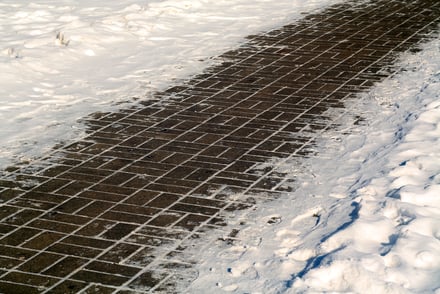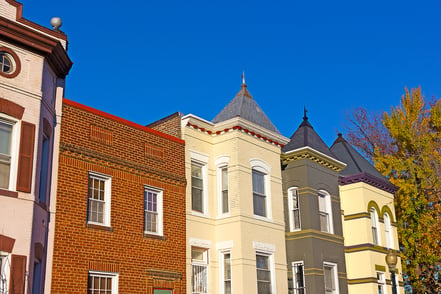Washington DC’s historic neighborhoods are well known for the old brick retaining walls that support tiered gardens in front of the old homes. Owners know that these hardworking structures add value and authenticity to the home and should be preserved and maintained with traditional design and materials.
A retaining wall is a specially designed structure that holds the weight of soil on one side and is free standing on the other. It is used to separate public from private spaces and to support urban gardens, walkways, and fences. Because it must support substantial weight – soil and water – only the most well designed walls survive over time. Crumbling brick walls are both unsightly and unsafe and need to be restored.
If Your Retaining Wall is Made of Old Brick…
There are generally two types of brick retaining walls. Although they look nearly identical, there is a difference in materials and method of construction.
- A cavity wall is made entirely out of brick. It has two standard brick walls just inches apart that share the same foundation. The space between them has steel and concrete for strength. Brick is used from top to bottom on both sides.
- A block core wall is constructed out of CMU (concrete masonry unit) which holds the steel within its cells filled with concrete. Block walls provide outstanding structural stability and are easy to waterproof against the long term effects of moisture. Different types of brick – whole brick, half brick and brick veneer – can be laid on the outside of the structural block core like a veneer.
It is not uncommon in older structures to have missing or damaged bricks. These should be replaced. Extensive damage may even require rebuilding of the structure. There are a few things you need to know about restoration before you take any action. You want to avoid the kind of repairs that detract from the integrity of the structure.
- To maintain the character of the wall, it is important that the replacement bricks match the historic originals. Masonry contractors will use as much of the original brick as possible when rebuilding a retaining wall. There are suppliers who can match just about any color and type of brick.
- The replacement mortar should be compatible with the historic mortar – limestone based. Even when the tuckpointing is done properly, the replacement mortar may look slightly different for a while until it weathers to match the existing mortar.
No matter how gracious and elegant these walls may be, they are first and foremost durable structures that must function as designed. Repairs require the proper materials and construction techniques available with masonry contractors in Washington DC who have expertise and experience in brick restoration in DC's historic neighborhoods.
Renaissance Development, a leader in brick restoration and historic preservation, specializes in the restoration of a historic brick building’s mortar joints using traditional methods (tuckpointing) and materials. Contact us for a free site visit and project quote.
Jun 6, 2017 1:11:14 PM



